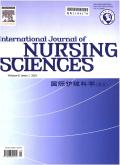The development and application of the mobile frailty management platform for Chinese community-dwelling older adults
IF 3.1
3区 医学
Q1 NURSING
引用次数: 0
Abstract
Objectives
This study aimed to develop a mobile frailty management platform for Chinese community-dwelling older adults and evaluate its effectiveness, usability and safety.
Methods
Based on literature research, the research team combined the frailty cycle and integration models, self-determination theory, and technology acceptance models and determined the frailty interventions through expert discussion, then transformed it into multimedia resources, finally, engineers developed the mobile management platform. A cluster sampling, parallel, single-blind, controlled quasi-experimental trial was conducted. Sixty older adults from two community health service centers were recruited from March to August 2023. The control group received routine community care, while the intervention group used the mobile frailty management platform. The incidence of frailty, scores of quality of life, depression, sleep quality, and grip strength within 12 weeks were compared between the two groups, and the availability and safety of the platform were assessed.
Results
A total of 52 participants completed the study, 27 in the intervention group and 25 in the control group. At 12 weeks after the intervention, the frailty state of the intervention group was reversed to pre-frailty. There were no significant differences in the scores of quality of life, depression, sleep quality, and grip strength between the two groups before and 4 weeks after intervention. At 8 weeks and 12 weeks after the intervention, the quality of life, depression, and grip strength of the intervention group were improved with statistical significance (P < 0.05). Sleep quality was statistically significant only 12 weeks after the intervention (P < 0.05). System Usability Scale score for the platform was (87.96 ± 5.88), indicating a highly satisfactory user experience. Throughout the intervention, no adverse events were reported among the older adults.
Conclusions
The mobile frailty management platform effectively improved frailty status, depressive mood, sleep quality, grip strength, and quality of life for Chinese community-dwelling older adults. It holds clinical application value and is an effective tool for strengthening frailty management among Chinese community-dwelling older adults.
中国社区老年人移动衰弱管理平台的开发与应用
本研究旨在为中国社区老年人开发一个移动虚弱管理平台,并评估其有效性、可用性和安全性。方法研究团队在文献研究的基础上,结合脆弱性循环与集成模型、自我决定理论和技术接受模型,通过专家讨论确定脆弱性干预措施,并将其转化为多媒体资源,最后由工程师开发移动管理平台。采用整群抽样、平行、单盲、对照准实验方法进行研究。研究人员于2023年3月至8月从两个社区卫生服务中心招募了60名老年人。对照组采用常规社区护理,干预组采用移动衰弱管理平台。比较两组患者12周内的虚弱发生率、生活质量评分、抑郁评分、睡眠质量评分和握力评分,并评估平台的可用性和安全性。结果52人完成研究,干预组27人,对照组25人。干预12周后,干预组虚弱状态恢复到虚弱前状态。干预前和干预后4周,两组患者的生活质量、抑郁、睡眠质量、握力得分均无显著差异。干预后8周和12周,干预组患者的生活质量、抑郁情绪、握力均有改善,差异均有统计学意义(P <;0.05)。干预后仅12周睡眠质量有统计学意义(P <;0.05)。该平台的系统可用性量表得分为(87.96±5.88),用户体验非常满意。在整个干预过程中,老年人中没有报告不良事件。结论移动衰弱管理平台可有效改善中国社区老年人的衰弱状态、抑郁情绪、睡眠质量、握力和生活质量。具有临床应用价值,是加强我国社区老年人衰弱管理的有效工具。
本文章由计算机程序翻译,如有差异,请以英文原文为准。
求助全文
约1分钟内获得全文
求助全文
来源期刊

International Journal of Nursing Sciences
Nursing-Nursing (all)
CiteScore
6.10
自引率
2.60%
发文量
408
审稿时长
25 days
期刊介绍:
This journal aims to promote excellence in nursing and health care through the dissemination of the latest, evidence-based, peer-reviewed clinical information and original research, providing an international platform for exchanging knowledge, research findings and nursing practice experience. This journal covers a wide range of nursing topics such as advanced nursing practice, bio-psychosocial issues related to health, cultural perspectives, lifestyle change as a component of health promotion, chronic disease, including end-of-life care, family care giving. IJNSS publishes four issues per year in Jan/Apr/Jul/Oct. IJNSS intended readership includes practicing nurses in all spheres and at all levels who are committed to advancing practice and professional development on the basis of new knowledge and evidence; managers and senior members of the nursing; nurse educators and nursing students etc. IJNSS seeks to enrich insight into clinical need and the implications for nursing intervention and models of service delivery. Contributions are welcomed from other health professions on issues that have a direct impact on nursing practice.
 求助内容:
求助内容: 应助结果提醒方式:
应助结果提醒方式:


